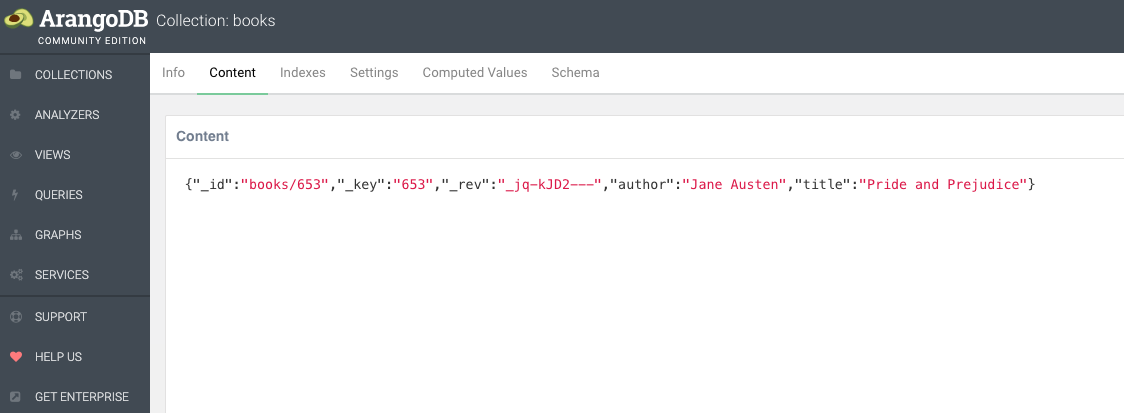Introduction
Kugelblitz is a Spring Boot application template that lets us set up REST JSON API webservice with minimal effort. Its goal is to swiftly productionize a persistence webservice with all the elements of modern microservices with features including:
- Explicit interface: Kugelblitz specifically serves impersonation-free CRUD operations
- Tech agnostic API: In a world of constant and rapid changes, Kugelblitz does not require integration technology that dictates what technology stack to use for interactions
- Simple: Kugelblitz allows clients full freedom in technology choice by
Kugelblitz is designed for:
- non-business persistence capabilities that maximizes functions while minimizes the conceptual complexities (everything is built on top of exiting best practices; no new concept invented)
- performance-wise caching
It is not for:
- security aspect, such as Authentication or Authorization
- any business layer logics
For this reason, Kugelblitz is suitable for a microservice architecture.
Quick Start
Getting Podman Image
wget https://kugelblitz.openml.io/openml-kugelblitz.tar
podman load -i openml-kugelblitz.tar
Setting Environment Variables
- Feel free to change the values of
KUGELBLITZ_ARANGO_USERNAMEandKUGELBLITZ_ARANGO_PASSWORD. The values below are examples only. - Please do NOT, however, modify the values
http://arango-db:8529and$KUGELBLITZ_ARANGO_PASSWORD
export KUGELBLITZ_ARANGO_HOSTS=http://arango-db:8529 && \
export KUGELBLITZ_ARANGO_USERNAME=root && \
export KUGELBLITZ_ARANGO_PASSWORD=root && \
export ARANGO_ROOT_PASSWORD=$KUGELBLITZ_ARANGO_PASSWORD
Spinning Up Services
Save the reference compose.yaml below where we could use for production. Simply execute
services:
kugelblitz:
image: localhost/openmlio-kugelblitz
ports:
- "8080:8080"
environment:
KUGELBLITZ_ARANGO_HOSTS: ${KUGELBLITZ_ARANGO_HOSTS}
KUGELBLITZ_ARANGO_USERNAME: ${KUGELBLITZ_ARANGO_USERNAME}
KUGELBLITZ_ARANGO_PASSWORD: ${KUGELBLITZ_ARANGO_PASSWORD}
healthcheck:
test: ["CMD", "curl", "-f", "http://localhost:8080/actuator/health"]
timeout: 10s
retries: 10
depends_on:
arango-db:
condition: service_healthy
arango-db:
image: arangodb:latest
ports:
- "8529:8529"
environment:
ARANGO_ROOT_PASSWORD: ${ARANGO_ROOT_PASSWORD}
volumes:
- arango-data:/var/lib/arangodb3
- arango-app:/var/lib/arangodb3-apps
healthcheck:
test: [ "CMD", "arangosh", "--server.endpoint", "tcp://localhost:8529", "--server.username", "root", "--server.password", "${ARANGO_ROOT_PASSWORD}", "--javascript.execute-string", "db._version()" ]
timeout: 3s
retries: 10
start_period: 20s
volumes:
arango-data:
arango-app:
Then start the service with
podman-compose up
When we see the output like the following
arango-db-1 | 2025-05-11T15:26:29Z [1] INFO [cf3f4] {general} ArangoDB (version 3.11.13 [linux]) is ready for business. Have fun!
kugelblitz-1 |
kugelblitz-1 | . ____ _ __ _ _
kugelblitz-1 | /\\ / ___'_ __ _ _(_)_ __ __ _ \ \ \ \
kugelblitz-1 | ( ( )\___ | '_ | '_| | '_ \/ _` | \ \ \ \
kugelblitz-1 | \\/ ___)| |_)| | | | | || (_| | ) ) ) )
kugelblitz-1 | ' |____| .__|_| |_|_| |_\__, | / / / /
kugelblitz-1 | =========|_|==============|___/=/_/_/_/
kugelblitz-1 |
kugelblitz-1 | :: Spring Boot :: (v3.4.4)
kugelblitz-1 |
...
kugelblitz-1 | 2025-05-11T15:27:29.539Z INFO 1 --- [nio-8080-exec-1] o.s.web.servlet.DispatcherServlet : Completed initialization in 2 ms
it means we are ready to play with Kugelblitz. Let's create a book entity first
curl -X 'POST' \
'http://localhost:8080/arango/createDocument/library/books' \
-H 'accept: application/json' \
-H 'Content-Type: application/json' \
-d '{
"title": "Pride and Prejudice",
"author": "Jane Austen"
}'
Next we will verify the data has been saved into database. The quick start uses ArangoDB as the persistence database. We can first hit the Arando web console at http://localhost:8529/ which should take us to a page like the following:
 .
.
Use root and root as username and password, respectively. Then navigate to the data page by Login -> selecting library in database dropdown menu -> click Select DB: library -> click books collection -> click Content in the top navigation bar. As we can see the data already exists as an Arango document in the database:

One could find more endpoints at http://localhost:8080/swagger-ui/index.html
Troubleshooting
Healthcheck is Failing
Inspect healthcheck logs with
podman inspect --format "{{json .State.Health }}" <container name> | jq
ArangoDB Healthcheck is Failing with "ArangoError: not connected"
This is mostly due to the wrong password during the "connection" via arangosh used in healthcheck. Wrong password
could be
